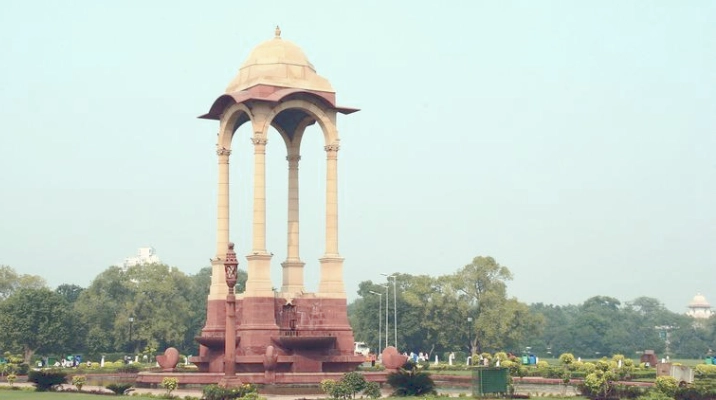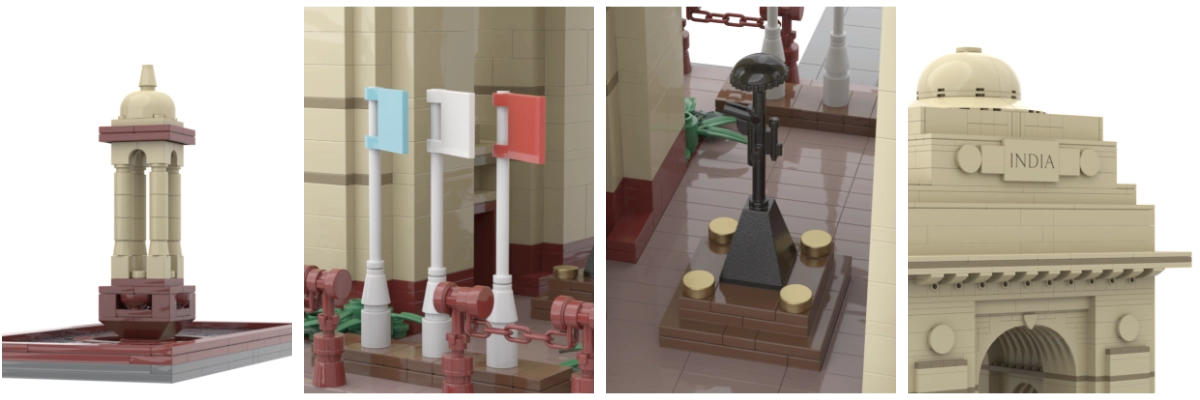
The India Gate
The India Gate is an unmissable architecture icon of India's capital city New Delhi. Located at the heart of the city, along the ceremonial boulevard Rajpath, this monument is on the bucket list of everyone who visits the national capital.
The main structure of the arched gate was built after the first world war, & later following the Bangaladesh Liberation war, a central structure with a capped inverted rifle surrounded with four eternal frames, was added as a tribute to the unnamed fallen soldiers.
February 2021, marks important milestones of India Gate's construction. The foundation was laid - a century ago - on February 10, 1921, & after a decade in making, it was inaugrated on February 12, 1931. The gate is 138 feet tall & 30 feet wide, stands on a low base of red Bharatpur stone, & rises in stages to a huge moulding, with a shallow dome on the top.

The Arch, on both sides, is inscribed with India, & the years 1914 & 1919 in roman numerals. Below the word INDIA, in capital letters, is inscribed the dedication for the gate to soldiers of the Indian Army.
The inscription reads:
"To the dead of the Indian Armies who fell and are honoured in France and Flanders Mesopotamia and Persia East Africa Gallipoli and elsewhere. In the near and the far-east and in sacred memory also of those whose names are here recorded and who fell in india or the north-west frontier and during the third Afgan war."

Amar Jawan Jyoti, or the flame of the immortal soldier, is a structure consisting of black marble plinth, with reversed L1A1 Self-loading rifle, capped by war helmet, bound by four urns, each with the permanent light (jyoti) from compressed natural gas flames, erected to commemorate Indian soldiers martyred in the war of the liberation of Bangladesh in December 1971, & inaugurated on January 26, 1972.
Flags of the Indian Armed Forces - Army, Navy, & Air Force - adorn the front of the gate, standing in close priximity to the Amar Jawan Jyoti.

The 73-foot cupola or canopy standing about 150 meters east to the India Gate, was constructed in 1936, inspired by a sixth century pavillion from Mahabalipuram. The domed canopy & chhajja sit on four Delhi Order columns.

The India Gate, recreated in Lego bricks, brings yet another Indian architecture marvel to the brick world of Lego, & into our homes. A unique build that complements well the Taj Mahal, & hopefully many more in future to celebrate the culture of Indian subcontinent.
